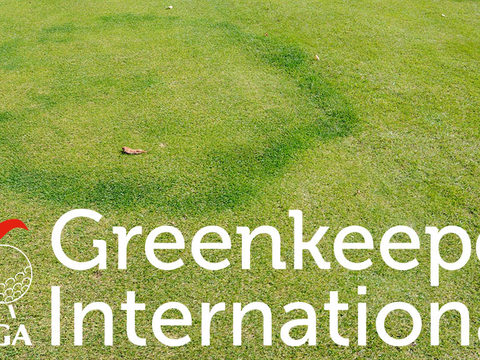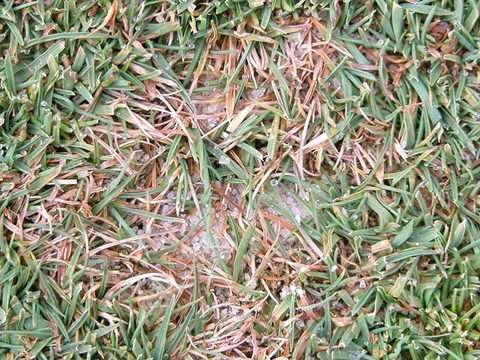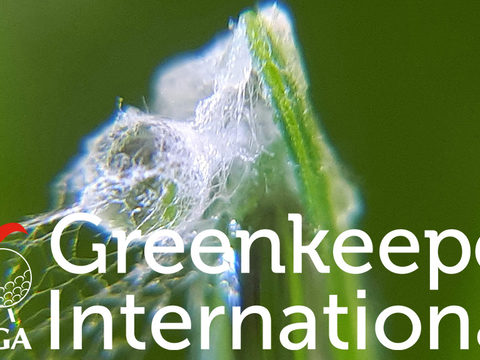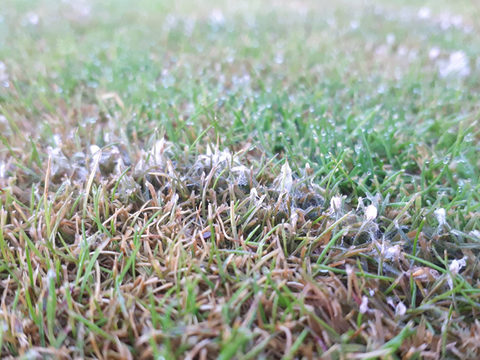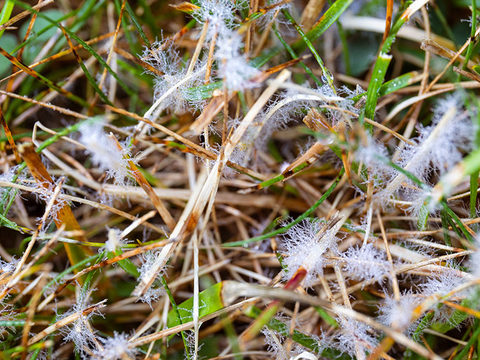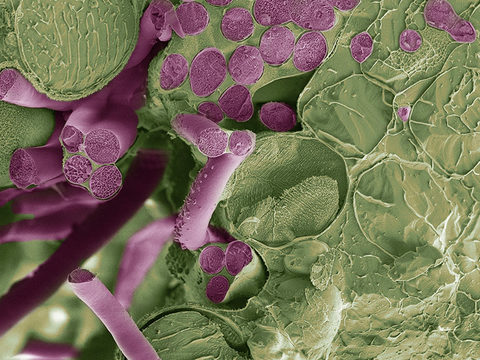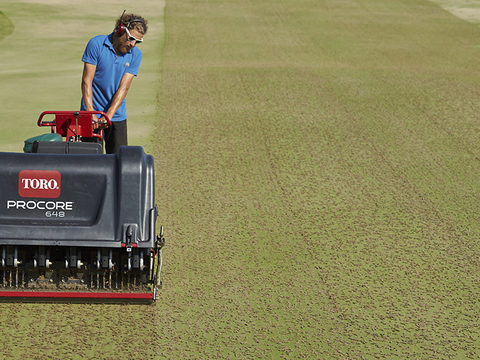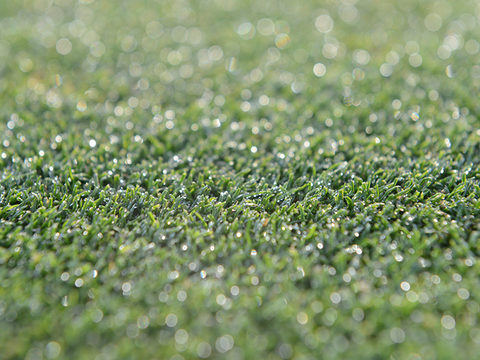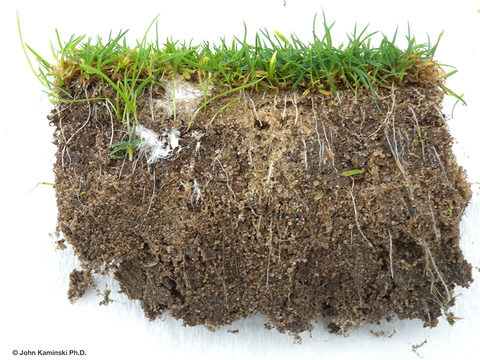Assess strategy success before spring recovery
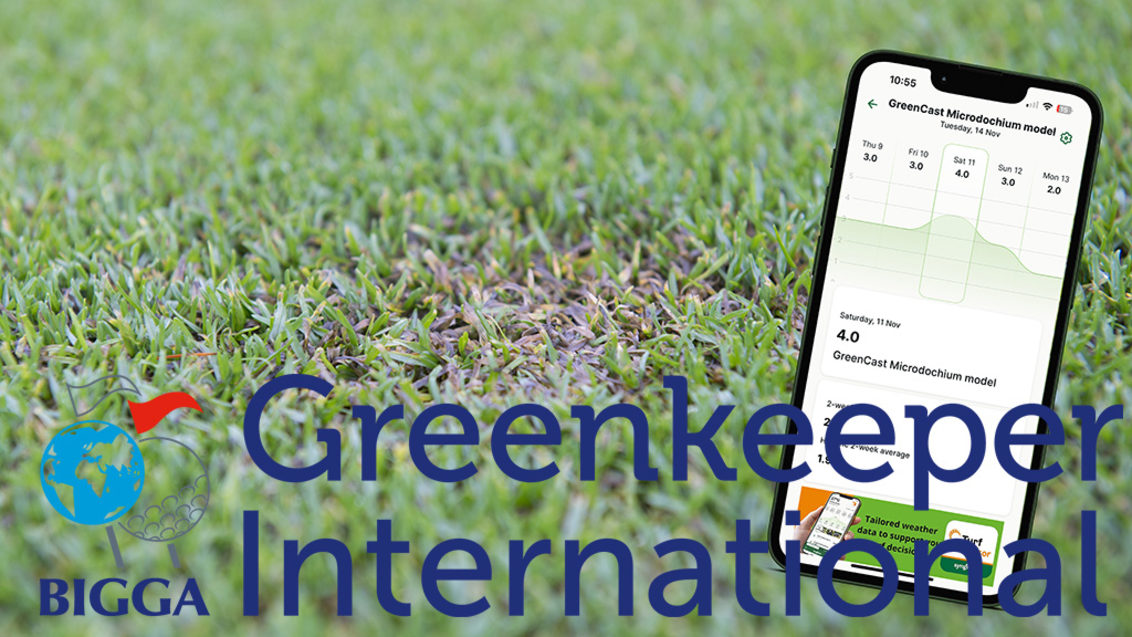
Wet weather this winter has posed a hugely serious challenge for turf surfaces. Not only have management practices been severely disrupted, but near continuous leaf wetness and periods of warm temperatures have created the double whammy of high-risk conditions for microdochium disease, reports Syngenta Technical Manager, Sean Loakes.

It’s not just the recent months that have proven so damaging for disease. Earlier last year fairy ring was highly evident during the warm, dry spell in June, anthracnose again broke out during some early stress periods, while more courses than ever reported damaging dollar spot outbreaks as early as April, and continuing right through to October or beyond.
The evidence of disease scars and surface damage is all too apparent during outbreaks, but will have further impacted on plant health that can manifest itself for many months.

Now, is a good time to assess the success of disease control strategies through the year - to evaluate what worked and what measures need to be adapted for the season ahead. It’s particularly pertinent to do now, before new spring growth and surface recovery masks problem areas.
The success of any strategy should assess results of both fungicide treatments and management practices designed to reduce risk of disease.
Introducing integrated strategies to cut the risk of one disease, could inadvertently have an impact in increasing the incidence of another. For example, reducing nutrition too low to counter microdochium risk, can make the plant more susceptible to an increase in the frequency and severity of dollar spot outbreaks, as well as exacerbating stress related anthracnose attack.
Getting the balance right and creating a program optimised for your site will vary in every specific situation, as well as with seasonal conditions. However, a good understanding of the relationship between the different factors will help formulate an effective plan, or enable other mitigating measures to be put in place.
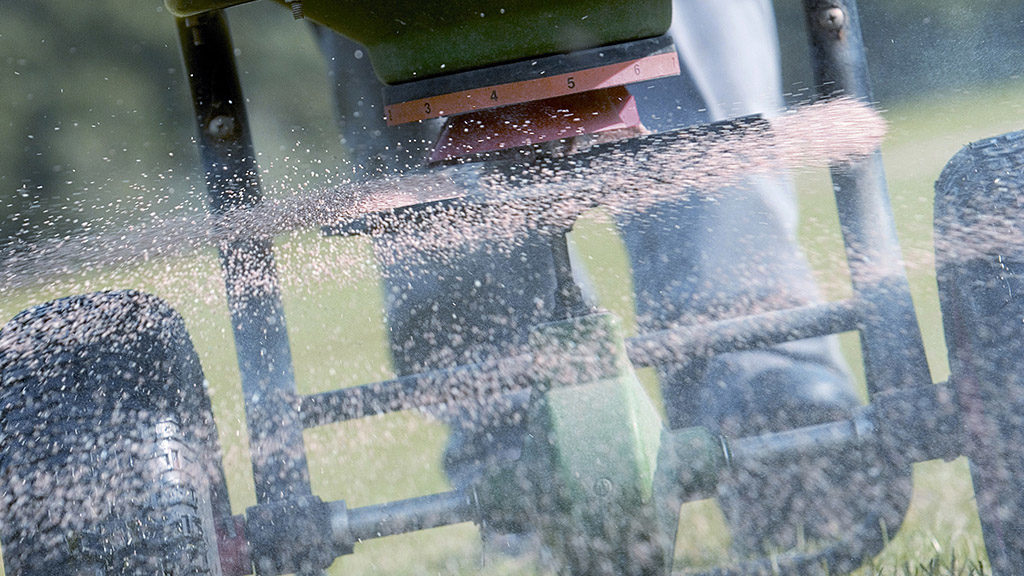
If the decision is made to reduce nutritional inputs, for example, it's even more important to focus extra effort that would be required to minimise any other stresses that might trigger an anthracnose outbreak, such as moisture or low cutting heights.
Furthermore, where you are aware that the risk factors for a specific disease may have increased, it will put greater emphasis on the most appropriate fungicide product selection and treatment timing to prevent attacks.
In a new European collaborative evaluation of turf ITM research, scientists identified work showing reducing N inputs could only lower the incidence of microdochium patch by up to 43% at best, particularly when in combination with rolling, bi-weekly application and utilising slow-release fertiliser. While in then same work the fungicide treatments achieved 66-85% control.
The research also identified where N was reduced to manage microdochium, the severity of anthracnose damage increased proportionally, highlighting how difficult it is to find optimal fertility programmes.
In further pan-European research, the levels of disease were reported to be significantly lower in turf treated with the biostimulant Hicure - where plant health was more resilient to infection. Along with utilising the pigment Ryder to retain colour intensity in areas of disease attack.
This has further strengthened the position of moving towards responsible sustainable use of all plant protection products, using combinations of cultural, biological and conventional chemical controls.
Recording the results of all ITM activity, along with the prevailing weather conditions and disease pressures, is essential to make decisions on the reliability and cost effectiveness of any actions.
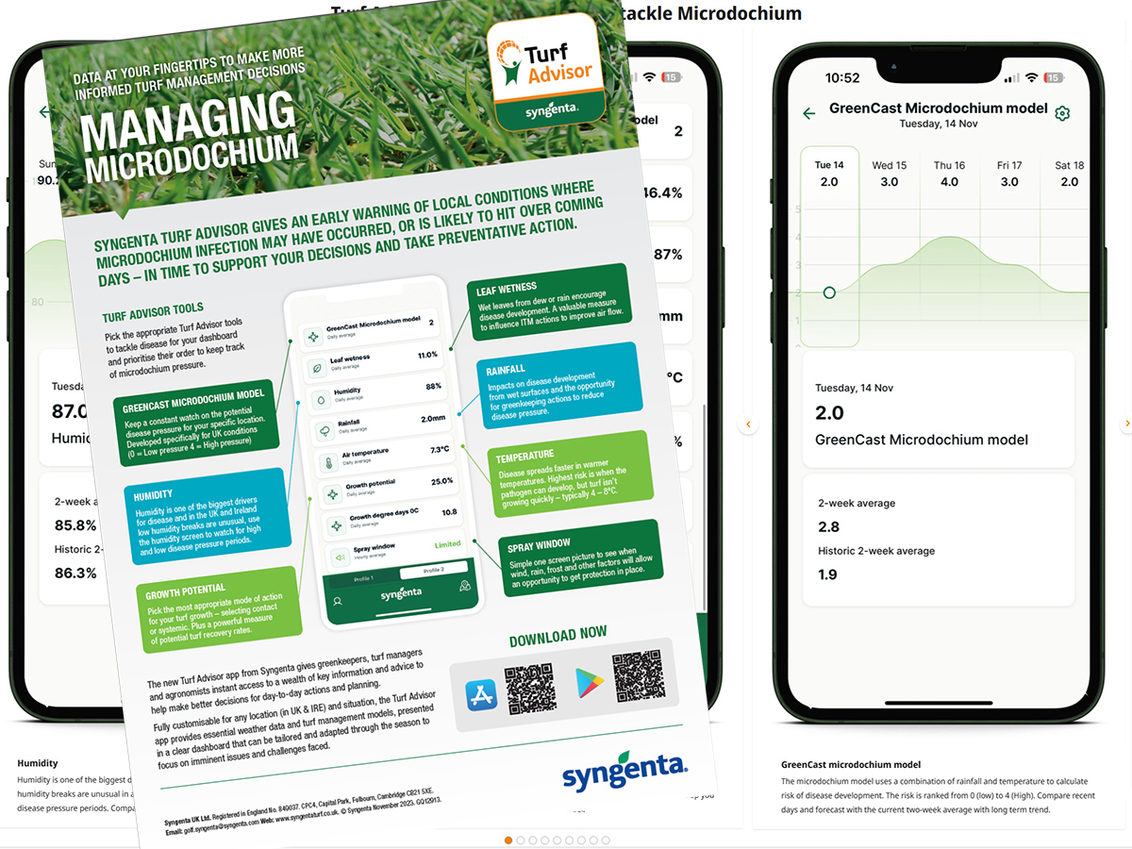
Now, there is the opportunity to use the Syngenta Turf Advisor app to build up an accurate picture of disease pressure and weather conditions during any activities, that can better assess their success. That can significantly help to assure the repeatability of those measures that worked under similar conditions, as well as avoid any that exacerbated issues.
Creating a bespoke dashboard in the app for specific problem diseases, incorporating all the local weather metrics that will influence infection pressure, will enable a dynamic approach to adopting the ITM practices that have been shown to work effectively under the conditions, as well as when the optimum fungicide application will be required to support turf health and protect surface quality.

